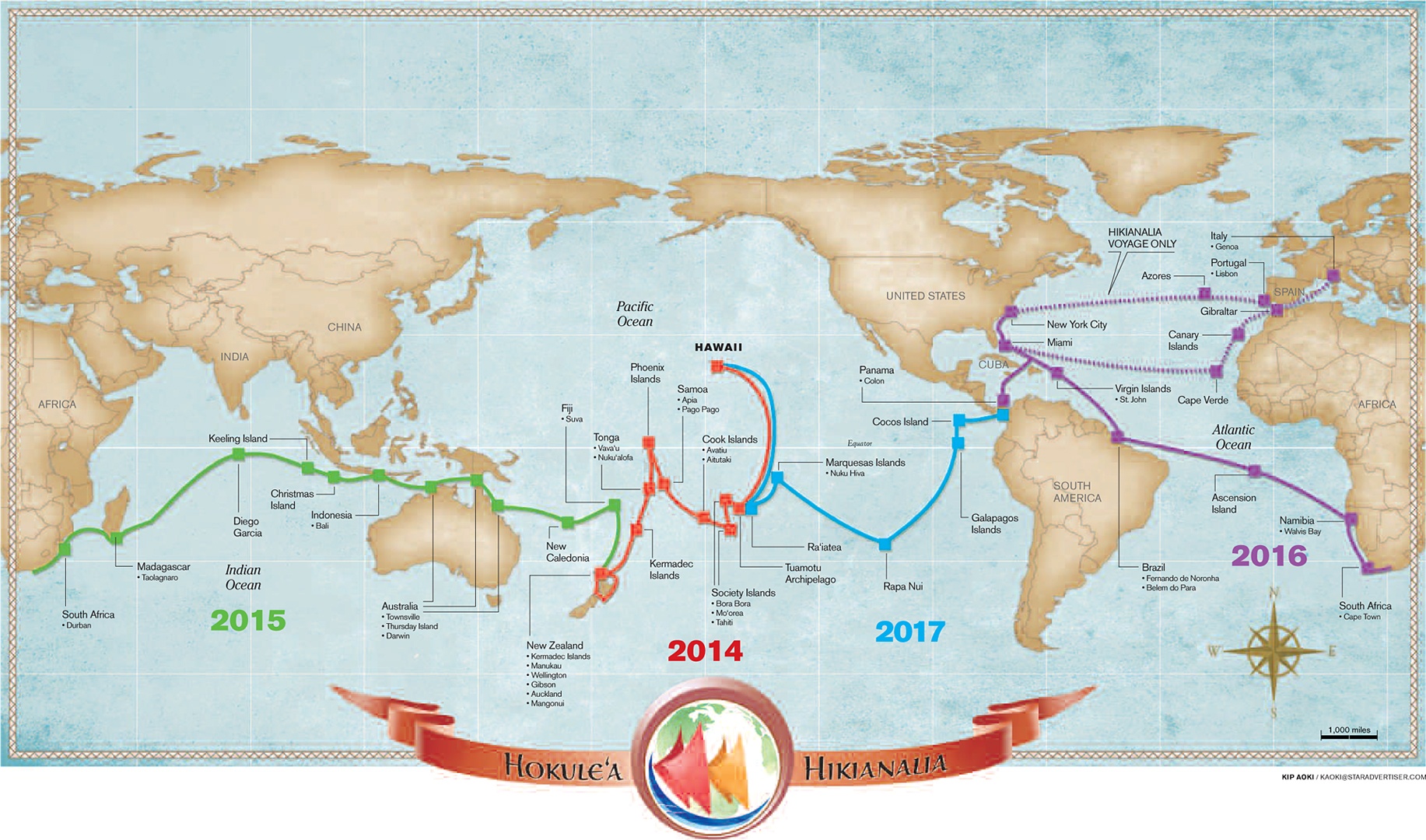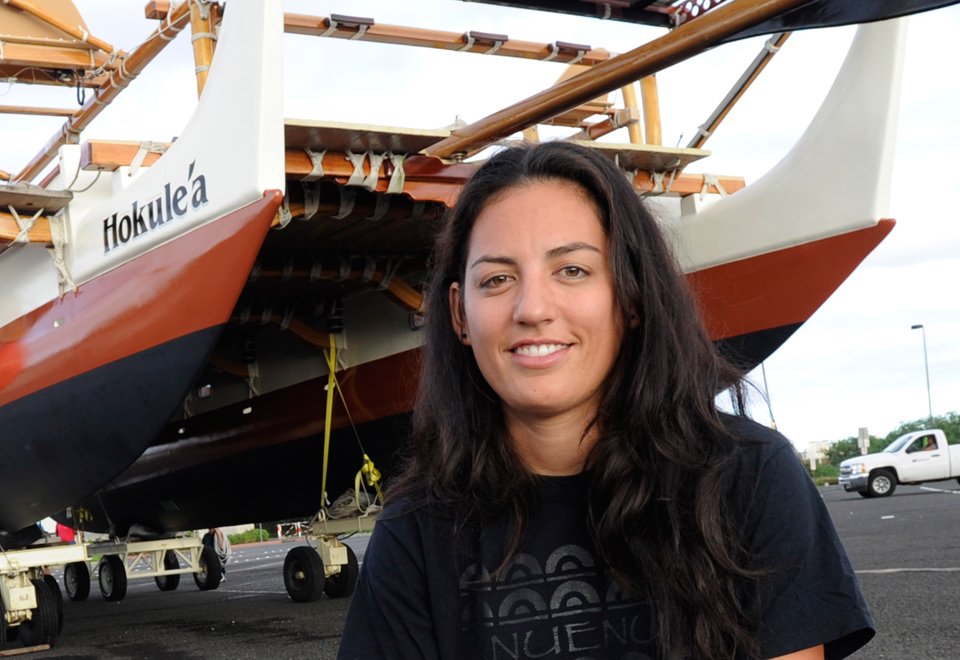Dangers lurk in strange waters





Lehua Kamalu has already burned through four computers in the past few years, helping to plan the Polynesian Voyaging Society’s most ambitious, daring and risky voyage yet.
“I overload them” with hundreds of revisions to the worldwide voyage route, mainly using Google Earth software, said Kamalu, a PVS apprentice navigator and University of Hawaii mechanical engineering graduate.

Even with the work Kamalu’s already done, much of the more than 50,000-mile global sail plan remains subject to change. It will likely involve more than 300 individual sailors on some 25 voyage legs, during a 36-month period.
She combs through charts and data on weather, piracy and other variables with the society’s president, Nainoa Thompson, preparing what they think will be a feasible route — and the safest possible — for two Pacific-based canoes venturing into unfamiliar and unpredictable waters.
First they chose the ports most important for the canoes to visit — places that symbolically align with the Malama Honua voyage’s message of unity and environmental stewardship.
Then they charted a course that would best avoid those areas’ hurricane seasons and work best with the winds.
Don't miss out on what's happening!
Stay in touch with breaking news, as it happens, conveniently in your email inbox. It's FREE!
“We have charts for everything,” Kamalu said. “The canoes don’t go great upwind,” and having to tack (pivot back and forth) into the wind would make the voyage exponentially longer, she said. “We don’t want to be doing some crazy maneuvering.”
PVS officials stress that safety will come above all else. They’ve pegged the Indian Ocean as the most dangerous stretch for Hokule‘a and its escort canoe, Hikianalia. The vessels are slated to leave the Torres Strait for the Indian Ocean in August 2015 and arrive in South Africa by November of that year.
“We just want to get through there as quickly as we can,” PVS Vice President Bruce Blankenfeld said recently.
“It’s a really wild ocean,” Kamalu said. “It’s a very different ocean in terms of how the waves work, how the currents work. It’s a different animal than our really awesome, really big Pacific,” where the waters are generally more consistent and predictable.
Then, for the sail along Africa’s eastern coast, the voyage’s leaders faced a nearly impossible dilemma.
Sail north toward Somalia and the Red Sea to reach the Mediterranean, and the canoes would encounter seas rife with piracy, kidnappings and ship collisions. Sail south, through the Mozambique Channel to the Cape of Good Hope, instead — and the crews could face churning seas, gusting winds, sudden storms and rogue waves known to surge to heights of 100 feet.
After consulting with the U.S. Navy and others, voyage leaders have so far opted to sail south and have only the most experienced crew members man the canoes.
“I will be doing the difficult one in the Indian Ocean because I don’t want to give that to any young people. I need to handle that,” Thompson said recently. The canoes will avoid any areas where piracy incidents have been reported in the past 10 years, he added.
They’ll monitor the weather extremely closely there, ducking in and out of ports on short notice when the conditions warrant.
Crews will use traditional wayfinding as much as possible, even in the Indian’s unfamiliar waters, Kamalu said. PVS might opt to tow the canoes or ship them through the area if the risk of danger proves too high, Thompson added.
They look forward to making it to the southern Atlantic — an area free of hurricanes — as quickly and as safely as possible, Kamalu said.
PVS is considering eventually sailing one of the canoes — likely the Hokule‘a, Kamalu said — back across the Atlantic from North America to include Europe and the Mediterranean in the voyage. They’ll miss those areas of the globe by sailing around the Cape of Good Hope instead of through the Red Sea.
In 2017, when Hokule‘a and Hikianalia return to their home waters of the Pacific, PVS leaders aim to place the canoes in the care of a new generation of navigators, where master navigators such as Thompson and Blankenfeld don’t have to be present.
“We have a whole slew of potential leaders, but they’ve got a lot of grooming to go through. They have a lot of growing up. They have to build their confidence,” pwo (master) navigator Kalepa Baybayan said. “The only way they’re going to do that is trial by fire. You really don’t grow until your teachers step off the canoe.”




[…] The Hikianalia will also serve to protect the Hokulea in the face of danger. When they reach Africa, for example, sometime in 2015, they’ll have to charge through stretches of the Indian Ocean where the current clashes with the wind, generating sudden storms, gusty winds, and rogue, 100-foot high waves. They’ll also have to avoid waters littered with piracy, kidnappings, and ship collisions. […]